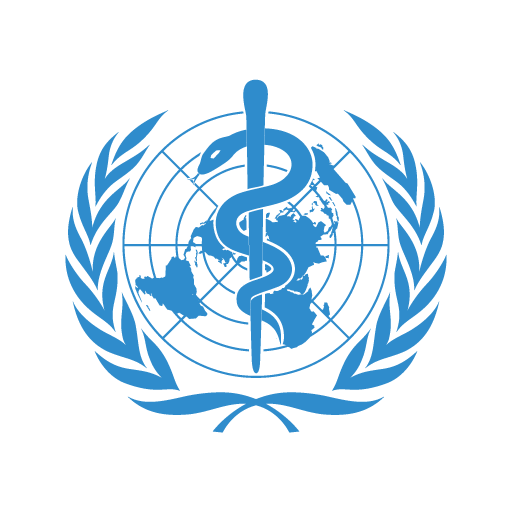Two data sets containing all antibiotics/antimycotics and antivirals. Use as.ab() or one of the ab_property() functions to retrieve values from the antibiotics data set. Three identifiers are included in this data set: an antibiotic ID (ab, primarily used in this package) as defined by WHONET/EARS-Net, an ATC code (atc) as defined by the WHO, and a Compound ID (cid) as found in PubChem. Other properties in this data set are derived from one or more of these codes.
antibiotics antivirals
Format
For the antibiotics data set: a data.frame with 456 observations and 14 variables:
ab
Antibiotic ID as used in this package (likeAMC), using the official EARS-Net (European Antimicrobial Resistance Surveillance Network) codes where availableatc
ATC code (Anatomical Therapeutic Chemical) as defined by the WHOCC, likeJ01CR02cid
Compound ID as found in PubChemname
Official name as used by WHONET/EARS-Net or the WHOgroup
A short and concise group name, based on WHONET and WHOCC definitionsatc_group1
Official pharmacological subgroup (3rd level ATC code) as defined by the WHOCC, like"Macrolides, lincosamides and streptogramins"atc_group2
Official chemical subgroup (4th level ATC code) as defined by the WHOCC, like"Macrolides"abbr
List of abbreviations as used in many countries, also for antibiotic susceptibility testing (AST)synonyms
Synonyms (often trade names) of a drug, as found in PubChem based on their compound IDoral_ddd
Defined Daily Dose (DDD), oral treatmentoral_units
Units oforal_dddiv_ddd
Defined Daily Dose (DDD), parenteral treatmentiv_units
Units ofiv_dddloinc
All LOINC codes (Logical Observation Identifiers Names and Codes) associated with the name of the antimicrobial agent. Useab_loinc()to retrieve them quickly, seeab_property().
For the antivirals data set: a data.frame with 102 observations and 9 variables:
atc
ATC code (Anatomical Therapeutic Chemical) as defined by the WHOCCcid
Compound ID as found in PubChemname
Official name as used by WHONET/EARS-Net or the WHOatc_group
Official pharmacological subgroup (3rd level ATC code) as defined by the WHOCCsynonyms
Synonyms (often trade names) of a drug, as found in PubChem based on their compound IDoral_ddd
Defined Daily Dose (DDD), oral treatmentoral_units
Units oforal_dddiv_ddd
Defined Daily Dose (DDD), parenteral treatmentiv_units
Units ofiv_ddd
An object of class data.frame with 102 rows and 9 columns.
Source
World Health Organization (WHO) Collaborating Centre for Drug Statistics Methodology (WHOCC): https://www.whocc.no/atc_ddd_index/
WHONET 2019 software: http://www.whonet.org/software.html
European Commission Public Health PHARMACEUTICALS - COMMUNITY REGISTER: http://ec.europa.eu/health/documents/community-register/html/atc.htm
Details
Properties that are based on an ATC code are only available when an ATC is available. These properties are: atc_group1, atc_group2, oral_ddd, oral_units, iv_ddd and iv_units.
Synonyms (i.e. trade names) are derived from the Compound ID (cid) and consequently only available where a CID is available.
Direct download
These data sets are available as 'flat files' for use even without R - you can find the files here:
https://github.com/msberends/AMR/raw/master/data-raw/antibiotics.txt
https://github.com/msberends/AMR/raw/master/data-raw/antivirals.txt
Files in R format (with preserved data structure) can be found here:
https://github.com/msberends/AMR/raw/master/data/antibiotics.rda
https://github.com/msberends/AMR/raw/master/data/antivirals.rda
Reference data publicly available
All reference data sets (about microorganisms, antibiotics, R/SI interpretation, EUCAST rules, etc.) in this AMR package are publicly and freely available. We continually export our data sets to formats for use in R, SPSS, SAS, Stata and Excel. We also supply flat files that are machine-readable and suitable for input in any software program, such as laboratory information systems. Please find all download links on our website, which is automatically updated with every code change.
WHOCC

This package contains all ~550 antibiotic, antimycotic and antiviral drugs and their Anatomical Therapeutic Chemical (ATC) codes, ATC groups and Defined Daily Dose (DDD) from the World Health Organization Collaborating Centre for Drug Statistics Methodology (WHOCC, https://www.whocc.no) and the Pharmaceuticals Community Register of the European Commission (http://ec.europa.eu/health/documents/community-register/html/atc.htm).
These have become the gold standard for international drug utilisation monitoring and research.
The WHOCC is located in Oslo at the Norwegian Institute of Public Health and funded by the Norwegian government. The European Commission is the executive of the European Union and promotes its general interest.
NOTE: The WHOCC copyright does not allow use for commercial purposes, unlike any other info from this package. See https://www.whocc.no/copyright_disclaimer/.
Read more on our website!
On our website https://msberends.github.io/AMR you can find a comprehensive tutorial about how to conduct AMR analysis, the complete documentation of all functions (which reads a lot easier than here in R) and an example analysis using WHONET data. As we would like to better understand the backgrounds and needs of our users, please participate in our survey!